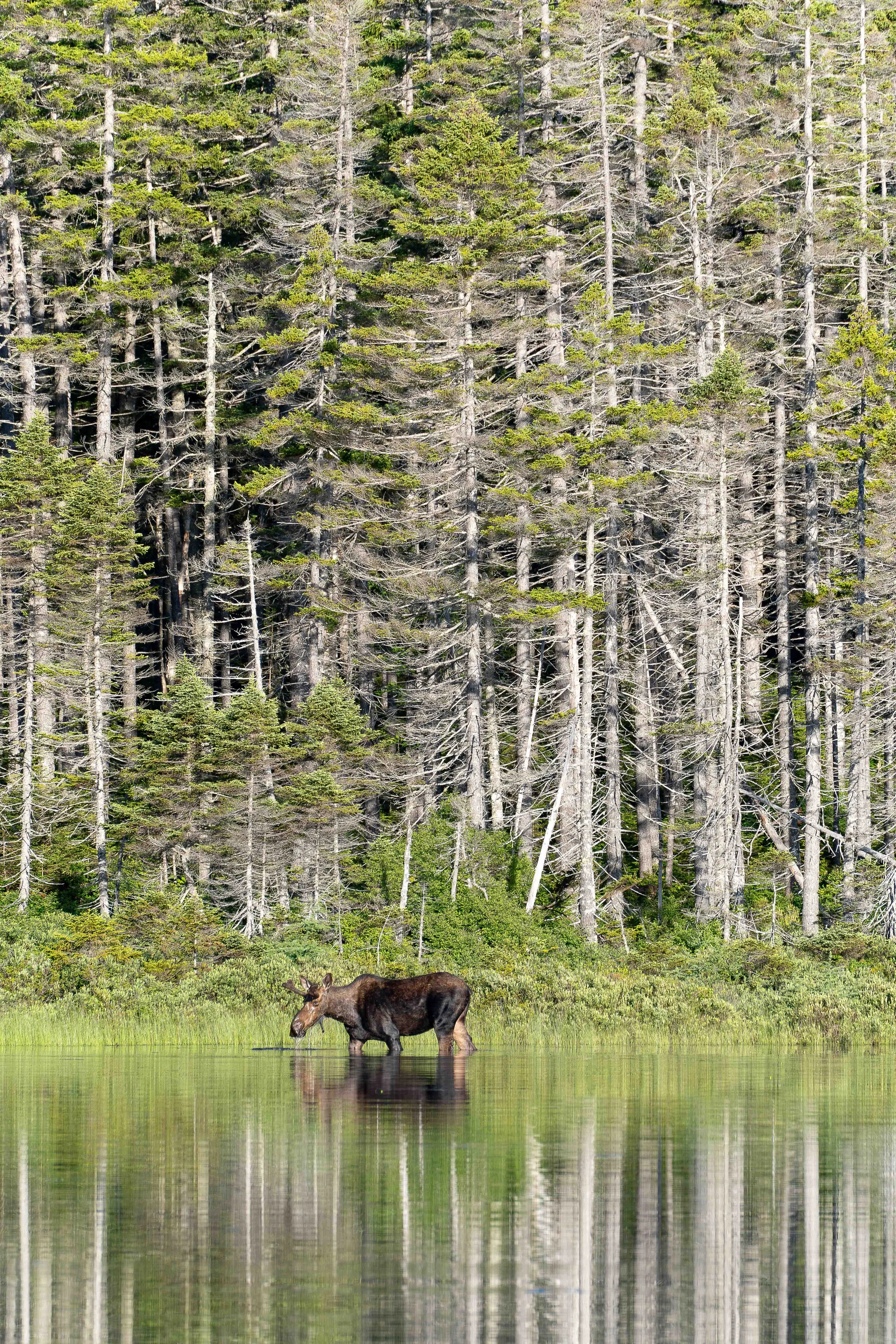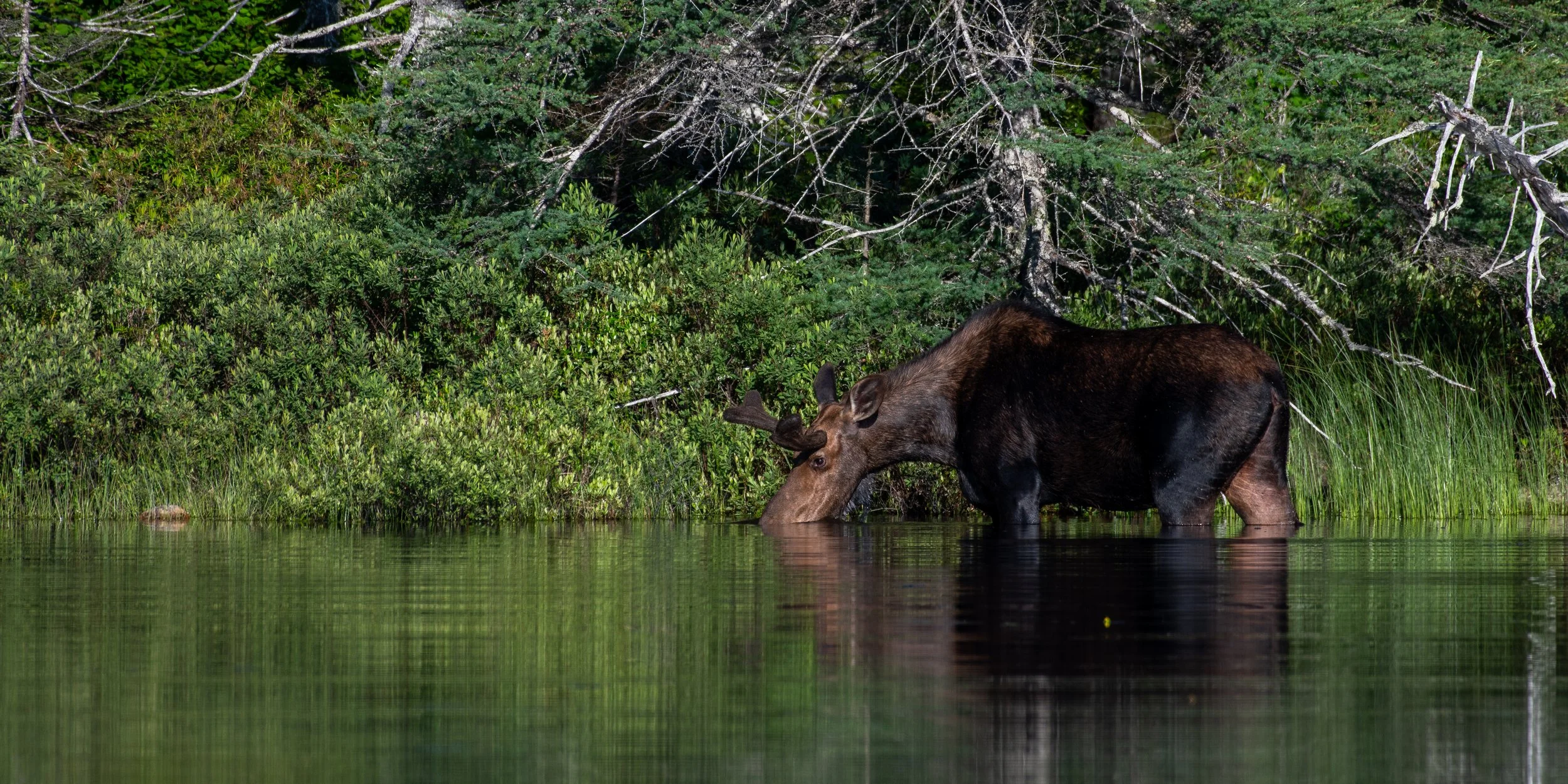Moose and the Future of New England Wilderness
I heard it before I saw it. They sound like big, slow people. Crash, crash through the brush. Fifty feet away from me, the moose appeared at the shore of the pond. We looked at each other at about the same time. I had disturbed his morning drink. I slowly retreated from the water and walked a short distance along the trail to another spot where I could see him from further away. We had seen moose trails along the shore of this small pond in the Pemigewasset Wilderness the day before, but thought we would be unlikely to see any in the flesh thanks to our neighbors across the pond, a group of three guys having a highly “spirited” reunion (bender) through most of the night. Yet here he was, up at the crack of dawn, perhaps more tolerant of noise than me…
Moose are shockingly large when seen in person. This one’s shoulders were easily as tall as me. They are funny looking animals - to my mind, a cross between a horse, donkey, and cow. But they are beautiful, and captivating to watch as they wade into deep water to eat aquatic plants.
I’ve heard them splashing around in the water for hours before dawn, not more than a couple hundred feet from my campsite. A bit unnerving at first, these giant animals taking a bath in the dark. Moose seem to love the water, and they have many uses for it, from feeding to cooling down (they can’t sweat!) to getting some reprieve from the bugs that torment them.
Every time I see one of these lumbering, plant-nibbling creatures I feel lucky that we still have places that are wild enough to support their lives. Unfortunately, like so many parts of our rich, diverse planet, this is under threat from the Trump administration and the corporations that see the earth as nothing but raw material for profit making.
The administration is trying to repeal the 2001”Roadless Rule” established by the US Forest Service that protected 58.5 million acres of National Forest land from road construction and logging (that’s roughly the size of Iowa or Illinois). This rule did not classify these areas as official Wilderness, the highest level of federal protection that must be granted by Congress and cannot be easily repealed by the Executive Branch. Such federally designated areas comprise 111 million acres. The Roadless Rule therefore protects an area more than half the size of all current Wilderness areas. In New England specifically, the Roadless Rule shields over one fifth of the land in the White Mountain and Green Mountain National Forests in New Hampshire and Vermont from these destructive activities (see a great visualization here).
Protecting large areas of wilderness is essential to slowing global warming and the mass extinction of plants and animals that is already happening. These areas offer innumerable other benefits for humans, including flood and wildfire prevention (more roads actually lead to more fires), ensuring our supply of clean drinking water, and not unimportantly, the simple opportunity to witness and enjoy these special places.
If these areas are logged, it will further fragment the tiny patchwork of Wilderness areas that currently exist in New England. Public comment on the repeal of this rule just ended, with hundreds of thousands of comments made in favor of preserving the Roadless Rule. Now, we need to keep our eye out for the Forest Service’s response. Of course, this is one among many of the administration’s attacks on laws that protect the environment, including the Endangered Species Act. But it’s an important one.
Photo courtesy of my friend, Aaron MacBryar, and the heavy telephoto lens he lugged into the backcountry!



